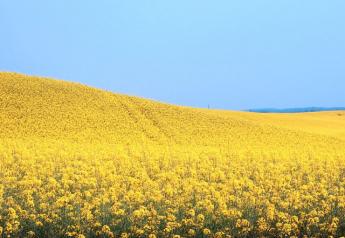Technology in Water Usage Will Help Us Do More With Less

Water shortages threaten to devastate India’s food security, driving down winter harvests by 20 percent nationwide and by as much as 68 percent in key regions, according to a new study.
As we approach World Water Day on March 22—an annual observance by the United Nations—we should focus our minds on the limited resource of freshwater. If Indian farmers like me lose access to it, we’ll also lose our ability to produce the food that we all need.
India is home to more than 1.3 billion people. Nearly one in five of the planet’s people live here: We’re the second most populous nation, after China. Yet we have only 4 percent of the world’s groundwater.
We must produce enough food so that no one goes hungry. With no serious efforts to conserve our water, this will become an increasingly difficult problem that must be dealt with and solved.
The recent analysis of Indian agriculture, based on satellite images and census data and published in the journal Science Advances last month, suggests that we’re speeding toward a crisis. The threat is that we’ll grow less food, even as our population continues to rise, leading to hunger and malnutrition. An estimate by the World Bank says that our GDP could shrink by 6 percent by 2050 on account of water scarcity.
I’ve seen the signs of water scarcity on my own farm. Although we use river water during our monsoon season, we pump ground water with electric motors and diesel engines at other times of the year. About two decades ago, we could count on extracting high-quality water from 40 feet beneath our feet. Today, however, the water level has fallen to about 200 feet below the ground. In some places, it has dropped to 250 feet.
The steep decline in ground water resource and its quality are serious matters to be worried about.
Farmers not only must confront the problem of freshwater depletion in India—we must lead the way toward a solution. Agriculture accounts for 78 percent of our nation’s water usage, dwarfing other recipients, such as the domestic sector (6 percent), industrial (5 percent), and electrical (3 percent).
The good news is that we may be able to reverse our situation. As electricity for agriculture pump sets are provided to the farmers with no cost in many states, it is unintentionally encouraging many Indian farmers to use water with wild inefficiency. This means we have a lot of room for improvement, especially if we recognize that we don’t always have to flood our fields to grow food.
We should pursue a goal of “more crop per drop”—a slogan I first encountered on a visit to farms in Israel, a dry country where farmers treat water as a precious commodity. Israeli water-management policies rely on modern technologies, such as micro-irrigation, which seeks to give plants only the water that they need and nothing more.
This model ought to inspire the rest of us. We should strive to deliver the right amount of water to the right place at the right time.
Unfortunately, many of our current practices don’t come close to this ideal.
Rice, for example, is one of our staple foods. I grow it on my farm. As crops go, it’s thirsty: Producing a kilogram of rice can take as much as 3,500 liters of water. Yet many Indian farmers use 4,800 liters and in some states this figure can soar to 6,000 liters.
We can do a lot better—especially if we invest in drip or micro-irrigation, as I’ve done on my farm.
Another helpful approach is called “Alternative Wetting and Drying.” Rather than flooding our fields, we can water them intermittently, allowing the soil to absorb the water before putting more on. A third tool is the “System of Rice Intensification,” which involves the management of seedlings, weeds, and more. (See this video, which shows how we’ve adopted SRI on my farm.)
Additional answers can involve GM technology, which enable us to grow crops that do a better job of resisting weeds, pests, and disease. They can also improve tolerances for both droughts and floods. Perhaps in the future, we’ll develop varieties that are more efficient with water. The new gene-editing technique of CRISPR holds tremendous promise for agriculture.
Used correctly, these techniques offer a wonderful paradox: Water use goes down and yields go up.
This is how we’ll fix our water crisis: Technology will help us do more with less.
Mr. V Ravichandran owns a 60-acre farm at Poongulam Village in Tamil Nadu, India where he grows rice, sugar cane, cotton and pulses (small grains). Mr. Ravichandran is a member of the Global Farmer Network, 2013 recipient of the Kleckner Award and serves on the World Economic Forum New Vision for Agriculture Transformational Leaders Network. www.globalfarmernetwork.org
Follow us on Facebook | @GlobalFarmerNet & @World_Farmers on Twitter | Instagram | LinkedIn







